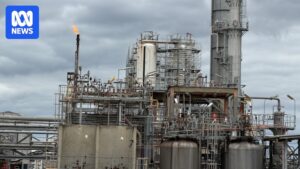
Australia’s construction industry is bracing for a significant workforce shortfall, projected to reach 300,000 by mid-2027, as an unprecedented surge in energy and housing projects places mounting pressure on the sector. A recent report by Infrastructure Australia highlights a record $242 billion in major projects planned over the next five years, a substantial increase from last year’s $213 billion estimate.
The independent agency reports a current workforce deficit of 141,000, which, although an improvement from previous estimates, is expected to escalate rapidly as the project pipeline peaks in 2027. With the construction workforce currently just over 200,000, it must more than double to meet the anticipated demand of half a million workers.
Challenges and Opportunities in the Construction Sector
“Governments are doubling down on energy transmission and housing projects in a bid to meet their targets, while continuing to deliver the major transport projects we need,” said Infrastructure Australia’s chief executive, Adam Copp. He described the projects as “once-in-a-generation” opportunities but acknowledged the challenges they pose, particularly given the current inefficiencies in Australian construction compared to the mid-1990s.
Copp emphasized the need for increased efficiency, stating, “We need to do more with less.” The report underscores that while transport infrastructure, including road and rail projects, comprises over half of the estimated pipeline, it has grown by only 2% since the last estimate. In contrast, building infrastructure, which includes large housing projects, has increased by 8% and accounts for a third of the total.
Energy Projects and Regional Workforce Demands
The most significant growth has been in the utilities pipeline, notably energy projects, which jumped from $20 billion to $36 billion within a year, primarily due to transmission line expansions. These lines, often spanning vast distances, are expected to drive much of the construction activity in regional areas, where the worker shortage is most severe.
While the urban construction worker shortage is projected to nearly disappear by 2029, regional shortages are expected to quadruple within a year. Currently, the most acute shortages are among engineers, scientists, and architects, but there is a growing demand for trades workers, laborers, and project managers.
Government Initiatives and Skills Development
Federal and state government initiatives, including TAFE and apprenticeship subsidies, migration fast-tracking, and reform of licensing arrangements for electricians, are helping to alleviate the workforce crunch. However, the report calls for better coordination and identifies a skills gap in energy construction.
“The sector faces a dual challenge: filling critical roles in sustained short supply and upskilling the workforce for the digital and net zero transition,” the report noted.
The report also highlights the cautious approach of energy companies towards workforce and skills investment, with many adopting a “wait and see” strategy rather than committing to long-term training or efforts to bolster the workforce supply.
Efficiency and Innovation: Keys to Bridging the Gap
Infrastructure Australia’s workforce gap estimates are based on current sector capabilities, suggesting that improving efficiency could help close the gap without necessarily adding hundreds of thousands of workers. The report identifies low productivity as a significant issue, exacerbated by widespread subcontracting and procurement processes focused on cost-cutting rather than innovation.
“We need to start investing in innovation rather than fixating on delivering at the lowest possible cost,” Copp urged. The agency also pointed to slow environmental approval processes as a bottleneck, suggesting that government efforts to streamline these laws could expedite project timelines.
“Environmental approvals are often addressed later in the project life cycle — sometimes after the business case is developed, funding secured, timelines set, and designs scoped,” the report observed. “This can create challenges … where requirements are discovered progressively during delivery.”
Supply Chain Vulnerabilities and Future Prospects
The report also identifies vulnerabilities in the supply chain for building materials, advocating for increased use of recycled materials and highlighting concerns over Australia’s domestic steel-making capabilities. The joint federal and South Australian government initiative to take over the Whyalla Steelworks, which produces three-quarters of Australia’s structural steel, is seen as a potential solution to quality concerns over cheaper imports.
As Australia grapples with the dual challenges of workforce shortages and the need for greater efficiency, the construction sector stands at a crossroads. The coming years will be critical in determining whether the industry can rise to meet these challenges and seize the opportunities presented by the burgeoning project pipeline.







